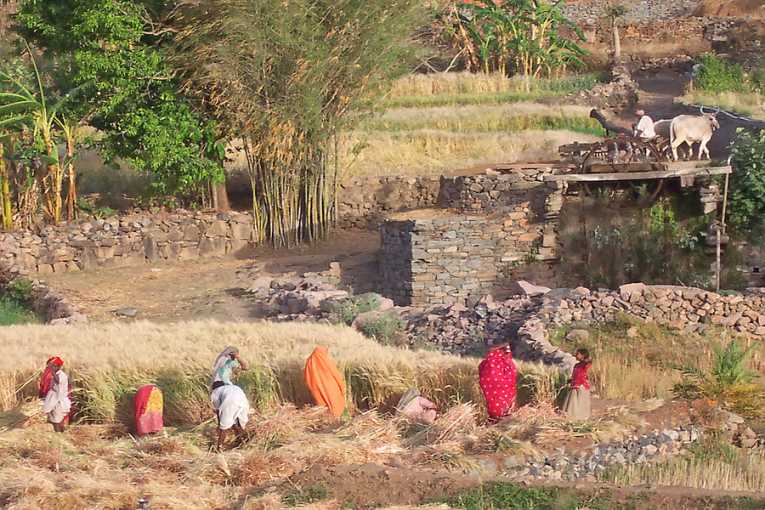With wildlife and man being pressed ever closer together, as a rising population demands more land for food, working out how to share the planet's limited floorspace has become a critical one for conservationists. That's especially the case in those areas still clinging to slices of natural landscape with a high biodiversity. Do we allow more land to be a shared blend of natural and farmed landscapes? Or do we enforce a strict division between reserve and farm - and seek to ratchet up yields on the land already being farmed?
In order to help answer that question, scientists from the University of Cambridge and the Royal Society for the Protection of Birds (RSPB) have gotten together to look at two wildlife-rich areas in the developing world - southwest Ghana and northern India. In both these places, there is pressure to put more land to the plow, to produce more food for a growing populace. The team looked at the spread of species - both common and rare - across the forests and farmland, as well as how much food the land was yielding. The resulting paper is published in tomorrow's Science.
Both farmers and wildlife poorer?
At one level, their results showed that the 'sharing' landscapes could be seen to be quite wildlife friendly. There were more species of trees and birds in those mixed landscape areas than were seen in large plantations. But they also fared poorly when looking at the number of rarer species, and were much less prolific in species diversity than the natural forests. Critically, as things stand, they produce much less food than farmland that is less 'mixed'."Farmland with some retained natural vegetation had more species of birds and trees than high-yielding mono-cultures of oil palm, rice or wheat but produced far less food energy and profit per hectare," said Dr Ben Phalan, the lead author from the University of Cambridge. 'As well as requiring more land to produce the same amount of food, the 'wildlife-friendly' farmlands were not as wildlife-friendly as they first appeared. Compared with forest, they failed to provide good habitat for the majority of bird and tree species in either region.'
It is the lack of productivity, both for farm and wildlife, which could be threatening to the remaining natural landscapes. Taking a 'sharing' approach could ultimately lead to more pristine landscapes being swallowed up, so taking the natural world towards biodiversity poverty. The team's models indicated that what would work better - for the two regions looked, at least - is to ring-fence the natural landscapes, and to focus on wringing as much food as possible from existing farmland. They call this approach 'land sparing'.
Get consumers on-board
'Land sparing' will, however, require a major effort on-the-ground, to make sure that the remaining natural habitats are properly protected. Professor Andrew Balmford thinks consumer awareness could help here. "It is critical to note that increasing crop yields would not work in isolation. (They) need to be combined with active measures such as national parks and community reserves to protect natural habitats from conversion to farmland," he said. "Conservation policy-makers should explore new ways to link protection of natural habitats with efforts to increase food yield per unit area in sustainable ways. Food retailers could perhaps make these linkages a feature of environmentally-friendly food products."
The authors concede that their results are not necessarily going to pan out in places other than the two looked - and so shouldn't be taken as a one-size-fits all approach. And they also say that making land more productive is not the same switching to intensively farmed mono-cultures. "Our study does not give uncritical support to large-scale agribusiness over small-scale farming systems," said Professor Rhys Green, another of the study's authors, from the RSPB.
High-yielding organic farming and other systems such as agroforestry can be a useful component of a land sparing strategy and may offer the additional advantage of fewer adverse effects of farming from fertilizers and pesticides. But whatever the farming system, protection of natural habitats will continue to be essential for the conservation of many species.
Image Credit: Indian Farmers Working In The Fields © tompozzo















